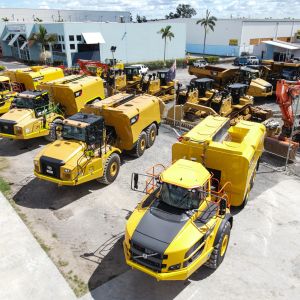Every time we get a power bill, the thought pops up how nice it would be to disconnect from the grid and become totally self sufficient. After all, we’ve all heard the news that there are now battery solutions coming onto the market that will make this option a possibility in the not too distant future. (By the way, in Australia we haven’t even started on the 10 Tesla battery trial sites that will still rely on diesel generators for back up, so it’s still a few years away from becoming a mainstream product, and won’t be as clean as most people think, but better than a pipe dream).
Successive governments pay only lip service to doing something to address the ever increasing costs from our so called competitive electricity market, and as a result, Australians have one of (and possibly the) highest power costs in the world. Yet we have the worlds broadest range of energy sources occurring naturally within the country, which should ensure we have both the cleanest and cheapest power in the world. In fact, it’s disgraceful that we don’t.
Most of the population and business community care about this topic. But just looking at a bill makes people believe this topic is complicated. It isn’t really, just that most parties prefer to make it look that way. Furphy’s getting peddled around by activists from either side do nothing to further the debate.
Greatest threat to human life
Providing energy is indeed attributed as one of the greatest threats to people’s lives. But not as most people associate, with predictions of rising temperatures causing natural destruction. No, we don’t have to wait a number of years for this Armageddon, power supply is already causing widespread poverty and destruction. The International Energy Agency has calculated that almost half the world’s population (3.5 billion people, of which 1.2 billion are children) lack access to proper energy sources. 4 million people die every year as a direct result of energy poverty. In India for example, 300 million people have no access to power, and a further 700 million lacks sufficient access to power to be able to cook, pump water, have lighting etc. This means things like living in unsanitary conditions and not being able to read after dark (meaning less possibility of gaining an education) affects a large portion of the population. 3 billion people worldwide find themselves contributing to deforestation by cutting down trees for cooking on rudimentary stoves that are highly polluting (each time they cook they experience smoke exposure the equivalent of inhaling 400 cigarettes).
Whilst I and many other Australian’s may feel hard done by in having to pay more than we should for our power, it pales in significance compared to the hardship inflicted on the world’s poor when we deny them access to power at all. Yet we hear barely a whisper about this.
A solution is possible
Australia can and should be a part of this solution. Unfortunately, we are fixated on having the wrong debate when we talk about power. We attempt to talk about energy solutions centred on the impact on the fourth decimal point regarding how much impact our climate policies will have in the world’s temperature, and completely omit the impacts of other countries not having access to energy at all, and when they do, are forced to use the most polluting sources available (dung, tree’s etc). Giving these people access to properly generated electricity would reduce global pollution.
The International Energy Agency estimates that 0.4% of global energy now comes from wind and solar. Should every single Government Green project ambition around the world be implemented in its entirety, even in 2040 “green power” will only make up 2.2% of global supply. As Warren Buffett says, none of these scheme’s make sense without the tax credits they are given. Every $1 put into Green Energy gives between a 7 cent to 13 cent return (that’s a fancy positive-spin way of saying we lose 93c to 87c for every dollar we put in – hardly smart economics). Reducing deforestation (by enabling access to other power sources) would have a much bigger impact on the climate. So it is possible to reduce global power poverty whilst simultaneously reducing CO2 pollution, but not with the current thinking.
Australia’s Part
Australia can provide the solution by addressing the power mix domestically, and by being a leading provider of several low cost resources to the world. Contrary to public belief that we control the world’s coal supply and can make the rules, we don’t. We are the fifth largest provider (behind China, USA, India and Indonesia) of a total of 75 countries that mine coal. We have one of the cleanest products in the world, meaning it burns the most efficiently and cleanly. If we stopped mining coal completely, short term it would raise coal prices slightly, but capacity in the other 74 countries would increase fairly quickly to meet demand. Why we even discuss closing down or putting in place hurdles (unnecessary legal challenges etc) to stop extraction of coal in Australia is ludicrous, based on that it is one of our largest export products, providing thousands of jobs.
Coal gets put in the spotlight any time “non-green” power supply is discussed, probably because it’s dark and makes your hands dusty. So we attributed it as dirty, but as always, it depends on what you compare to (cow dung?). A proper discussion should include all energy sources, and it is a mix of all sources that is part of the solution. Coal fuels 30% of global energy consumption. In Australia, coal supplies 64% of our power needs, hence why we should join the rest of the world in looking at a mix of nuclear, gas, hydro and other sources. We now export most of these sources, but don’t use them ourselves…
Wind and solar are unreliable, and usually don’t meet the demand patterns of consumers. They are not totally irrelevant, but are unlikely to provide more than about 1% of real needs. My own experiment by installing solar panels has allowed us to experience this first hand. We’ve changed our behaviour so we try to run most power consuming apparatus when the sun is shining. But take a quick look at the control panel, and the available power even on a sunny day jumps between less than 1kW and 5kW within the same minute depending on clouds etc – I wonder what appliances could run on that pattern? Depending on time of year and weather, the available power generated by our 5.5kW system over a day varies between about 6kWh (winter, when heating is required also) and nearly 30kWh. So we are stuck being reliant on a network with energy sources that provide base load.
This is why foreign countries and businesses are busy buying up Australian mines and mining companies. They can see the need for increased access to power resources, and they will get supply from somewhere in the world even if we decided to somehow limit our supply. Australia needs the future income and jobs that come from making power available in other countries. The most good we can do in this area is to make sure that the businesses and resources remain Australian owned and controlled. They need to be mined as efficiently and sustainably as possible. And most importantly, the natural resources and profits from them must stay within Australia so we too gain benefit from this opportunity. We’ll also be doing a world of good in helping the world’s most disadvantaged people gain a better life by breaking their poverty cycle, and with less pollution overall to boot. Investing in Australian Mining should be a major priority for all.
As always, onwards and upwards!
Fred Carlsson
General Manager



